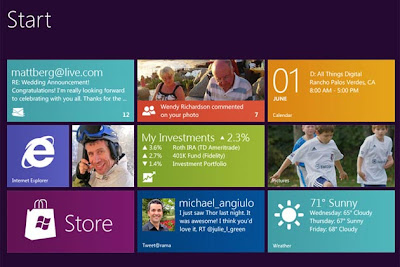Call it the week of Windows 8: Microsoft wasted no time luring developers to the new OS during its Build 2012 conference in Seattle Tuesday.
Among the showcasing going on, the Softies focused on W8 apps for the Windows Store, including ones for PayPal, ESPN and Dropbox.
Microsoft also revealed that 4 million people have made the switch to Windows 8 since the OS was made available Oct. 26, a number that's sure to peak developers' interest.
The company did not, however, make mention of Surface tablet sales.
Look for it in the Windows Store soon.
With the ESPN app, news, scores and videos are all aggregated, plus ESPN The Magazine, podcasts and photo galleries all make the cut.
For sports-specific fans, W8 lets users pin whatever sport they choose and their favorite teams to their Start screens, too.
With PayPal, the Windows 8 API lets devs use the service within any Windows Store app to actually get paid.
Microsoft also announced in its blog post that Twitter is also working on a Windows 8 app, a tidbit the social network later confirmed with a tweet. However, that app won't see the light of day for a few months.
Among the showcasing going on, the Softies focused on W8 apps for the Windows Store, including ones for PayPal, ESPN and Dropbox.
Microsoft also revealed that 4 million people have made the switch to Windows 8 since the OS was made available Oct. 26, a number that's sure to peak developers' interest.
The company did not, however, make mention of Surface tablet sales.
What the W8 apps are all about
Dropbox's new app "offers cloud based storage and synchronization service for photos, documents and videos on Windows 8," Microsoft wrote in an official blog post.Look for it in the Windows Store soon.
With the ESPN app, news, scores and videos are all aggregated, plus ESPN The Magazine, podcasts and photo galleries all make the cut.
For sports-specific fans, W8 lets users pin whatever sport they choose and their favorite teams to their Start screens, too.
With PayPal, the Windows 8 API lets devs use the service within any Windows Store app to actually get paid.
Microsoft also announced in its blog post that Twitter is also working on a Windows 8 app, a tidbit the social network later confirmed with a tweet. However, that app won't see the light of day for a few months.
























